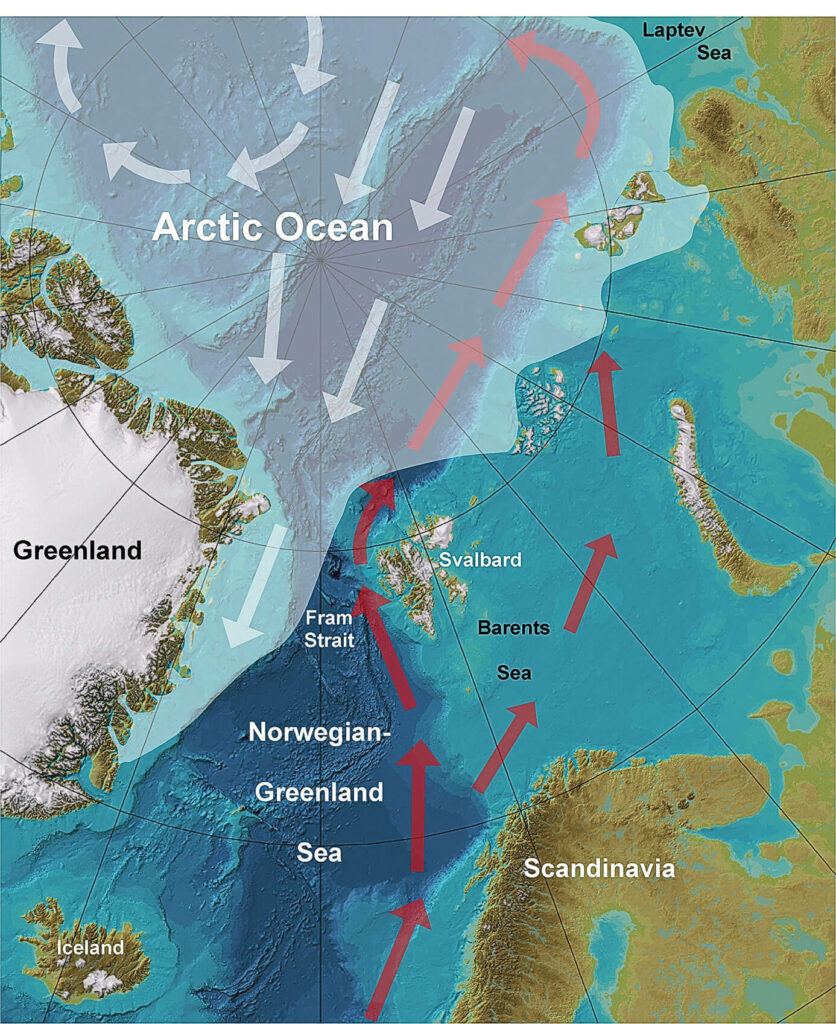The melting pole
Arctic sea ice in the hot seat
Recent observations and climate model predictions point toward the rapid loss of Arctic sea ice. This change will have severe consequences for people and ice-dependent species in the Arctic—as well as for humans, wildlife and plants far beyond the Arctic region. And as MATS GRANSKOG and MORVEN MUILWIJK write, these dramatic changes to the Arctic’s environment are occurring at an astonishing pace.
In the context of the global climate, a decade is a very short period of time. Even a human lifetime has generally been considered too short a span for someone to be able to notice changes. But not in the Arctic of today. Researchers working in the region over the past decade (or several) have seen significant changes in the icescape.
A mere decade ago, venturing out to the Fram Strait (the narrow strait between Greenland and Svalbard) in late summer meant encountering formidably thick Arctic sea ice. While the ice posed challenges for ship navigation, finding a suitable ice floe to work on was no problem for researchers. Today, the tables have turned. Only small, thin remnants of ice floes persist at the end of summer.
Sea ice plays a vital role in regulating the Earth’s climate by reflecting most of the sun’s energy back into space (in contrast to darker seawater, which absorbs nearly all of it). And the more sea ice melts, the faster the pace of melting becomes. This is what we call a positive feedback loop.
Rare long-term ice records tell a chilling story
The Arctic Ocean has a history of being difficult to access. Within our lifetimes, we needed heavy icebreakers and submarines to reach the interior of the Arctic year-round. Because of challenges like these, the Arctic is among the oceans with the scantiest available data. This scarcity underscores the immense value of the few long-term records of observations that we do possess for this region.
One of these records comes from the Fram Strait. As hypothesized and proven by Fridtjof Nansen back in the early 1900s, sea ice drifts across the Arctic Ocean. Due to the prevailing winds and currents, it ends up in the Fram Strait, which acts as a funnel. This is why the strait is an optimal location from which to monitor sea ice changes without the need to venture too far into the interior.
Our records from the Fram Strait date back to 1990, when the ice was still thick and present year-round. Since then, we have observed that the ice has decreased from 2.7 metres in thickness to approximately 1.7 metres, on average. At the same time, satellites have also recorded a significant decrease in sea ice extent. Putting these changes together tells us that the Arctic has lost nearly 50 per cent of its sea ice volume in the past few decades.

© Robert Spielhagen (IFM-GEOMAR, Kiel), (CC BY-NC-ND 2.0). Map has been edited.
White shading indicates average summer sea ice cover. White arrows indicate ice drift directions. Red arrows indicate the transport path of warm Atlantic water entering the Arctic, where it drops beneath the cold, ice-covered surface layer.
“Beyond recognition”
With the Arctic warming at a rate four times faster than the global average, climate models indicate that the decline in sea ice will persist. This will amplify the warming of the waters below and enhance the exchange of gases between the ocean and the atmosphere. Models also show that more open water results in stronger winds and, as a result, strengthened ocean circulation. The total impact of these environmental changes on Arctic ecosystems remains uncertain, but it is undeniable that the species that depend on sea ice—from small ice algae to polar cod, seals and polar bears—will face significant challenges in the near future. Other species may benefit at the expense of polar species.
There is no question that Arctic ecosystems are poised to undergo profound transformations, potentially beyond recognition. This change clearly affects Arctic communities, but some of the greatest impacts of sea ice loss will extend beyond the Arctic region. Weather patterns in Europe, North America and Asia are already affected, and other risks associated with climate change—such as wildfires, droughts and floods—are being amplified.
Most recent findings project that if greenhouse gas emissions continue unabated, the Arctic could be ice-free in summer within the next decade. As a result, early-career polar researchers can expect to witness even more significant changes than those observed by their older colleagues. It is crucial for us to be prepared for the reality that the Arctic of tomorrow will be vastly different from the Arctic of the past, and that these changes will affect the whole planet.
By Mats Granskog and Morven Muilwuk
Senior research scientist and early career scientist
MATS GRANSKOG is a senior research scientist working on Arctic sea ice and the physical processes linked to its interaction with the ocean and atmosphere. MORVEN MUILWUK is an early-career scientist working on Arctic ocean- ography and sea ice with a focus on climate model projections for the future Arctic Ocean.
